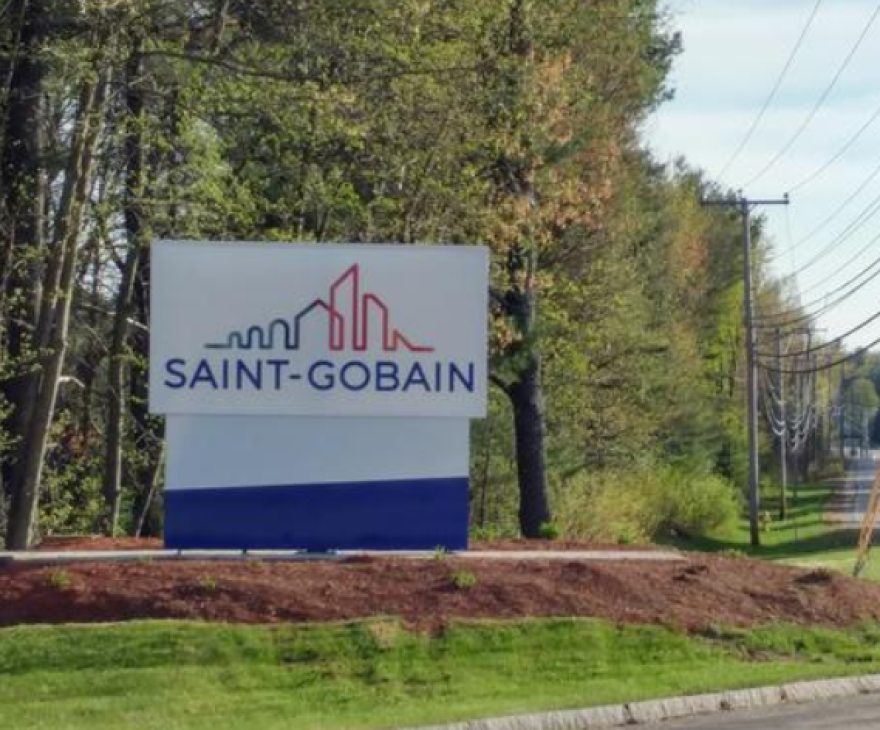The state says it hasn't been following its own rules in notifying people of potential water contamination near the Saint-Gobain plastics factory in Merrimack.
Regulators say they’re working to correct the problem and think most affected properties are already aware of the issue. But citizen advocates are worried that some in the area may be unknowingly drinking contaminated water as a result of the lapse.
It stems from state statute that requires the Department of Environmental Services to notify any private well users within 500 feet of an identified groundwater contamination site. They’re supposed to do so in writing within 45 days of the site’s discovery.
DES told state lawmakers last week they haven't been consistent with those notifications in the past couple of years in a roughly 64-square-mile area around the Saint-Gobain plant that’s covered by a 2018 consent decree. (Click here to view a detailed map, with this large area denoted by the blue line.)
The factory is the suspected source of toxic PFAS chemicals in local water supplies, and faces a class-action lawsuit from some neighbors.
Under the decree with the state, the company has provided new water connections to hundreds of affected homes and businesses. They've also gradually notified additional homes within 60 feet of all contaminated wells found as a result of required sampling.
DES says its lapse in its own notifications began in late 2019, when new, much lower state PFAS limits were introduced and many more homes were deemed contaminated.
Saint-Gobain has contacted nearly 2,000 additional property owners as a result of the change, and provided bottled water to nearly 600 of them, according to DES.
But the state says it’s failed to keep up with its own 500-foot notifications under the new PFAS limits. They say the entire Saint-Gobain response has been unprecedented in scale, posing big challenges for the notification system even before the standards were tightened.
In the coming weeks, the state says it will remedy the problem by sending letters to all of the roughly 4,200 properties in the affected area – including many who’ve already had new water lines installed by Saint-Gobain, or have otherwise been involved in the issue in the past.
DES says new geographic information system (GIS) technology has made the prospect of all these notifications easier than it would have been a few years ago.
They estimate that about 80% of these properties have already received a written state notification about their risk. That means that several hundred properties may not have gotten such notice. It’s not clear yet how many of those may be unaware of the risk, or may have unsafe PFAS levels in their drinking water.
It raises concerns for clean water advocates like former state Rep. Mindi Messmer. She’s urging anyone on a private well near Saint-Gobain who’s never heard from the state about the issue to reach out to DES to seek testing.
Regulators say they’ll have more details on the issue at the April 16 meeting of the legislature’s Commission on the Environmental and Public Health Impacts of Perfluorinated Chemicals.
DES notes that they have been following the 500-foot rule outside the consent decree area, as they assess the potential spread of PFAS contamination into towns like Londonderry.
Update, April 13: New Hampshire Safe Water Alliance has created a map of home wells where contamination has been identified around Saint-Gobain, using publicly available data. Click here to see more.








